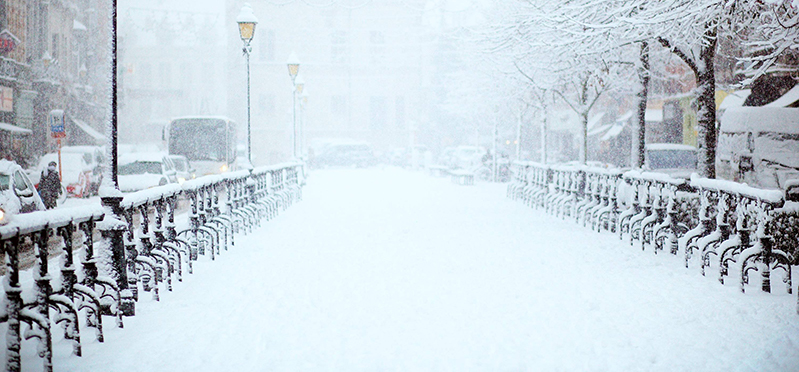Extreme Weather – Blizzards

While the new year is just beginning, we are still left with the dramatic weather extremes caused from years and years of damage to the environment. For America, the new year brought in one of the biggest blizzards to date.
What is a Blizzard?
A blizzard, or snowstorm, is a dangerous winter storm that is a combination of high winds and snow that result in low visibility, drastically low temperatures and extreme weather conditions. While blizzards typically contain heavy snowfall, some blizzards are produced by strong winds picking up snow that has previously fallen creating what is known as ‘ground blizzards’.
Weather Warnings
Weather warnings are announced to the public once a blizzard is deemed as imminent or upcoming in the next 12 to 36 hours to ensure appropriate precautions are put in place in order to ensure their safety.
What are the Risks?
There are many life-threatening risks blizzards can cause, such as:
- Road Accidents
Travellers are more at risk of road accidents during times of increased snowfall, lower temperatures and strong winds as visibility becomes impaired, roads become icy and conditions can become so severe that vehicles get stuck. Therefore, drivers must observe weather warnings and follow procedures to keep themselves and others safe. - Frostbite
The risk of frostbite is also heightened during a blizzard as temperatures become so low skin tissue can quickly become damaged. The symptoms of frostbite include:- Pins and needles
- Throbbing
- Numbness
- Tingling
- Blisters
- Stiffness[1]
- Hypothermia
Hypothermia is another low-temperature-related illness that can have catastrophic effects on the human body. Some symptoms of this include:- Tiredness
- Confusion
- Shivering
- Cold, pale skin
- Fast breathing
- Slurred speech[2]
Those suffering from either hypothermia, frostbite or other weather-related conditions must seek medical attention if symptoms worsen or last an extended period of time.
The Ongoing Blizzard in America
Since the start of January 2018, America has been faced with a severe blizzard in many regions across the nation, including, Massachusetts, New York and Florida. Winds have so far reached over 70 mph, and temperatures are expected to fall as low as -40℃. The blizzard has so far caused 22 fatalities nationwide.
National Effects
Many areas across the nation have seen a significant amount of snowfall, reaching up to a total of 18 inches in some areas. As a result of this, many snow and salt trucks have been sent out to try and clear some of the snow to minimise its effects.
Many weather forecasters are even referring to this blizzard as a ‘bomb cyclone’ due to its severity.
Florida
The blizzard began in the Gulf of Mexico but quickly made its way towards Florida, a state that has not seen this much snowfall in nearly 30 years. The effects on the state have been very severe for everyone and it has even been reported that hundreds of dead fish have been washed up on a beach in Central Florida as a result of the extreme conditions.
Massachusetts
Power outages hit Massachusetts hard, causing blackouts in more than 5,000 homes. Flooding has also, destroyed many homes and over 50 cars were taken in by a storm surge that swept the state.
Winds in New England caused a high level of coastal, icy water flooding which reached levels that have not been seen since the 1978 blizzard.
Transport
Transport across the nation has been at a standstill for many days due to the cancellation of over 3,000 international and domestic flights and roads deemed unsafe to travel.[3]
What Can We Do To Avoid This?
While many business and countries are working to lower these negative effects, conditions are still getting worse and, although it will be a long process, more people need to do their part in protecting the environment. During 2017, we saw the rise in wildfires, hurricanes and heatwaves. We do not want this to carry on, so it is important that action takes place to reverse the harmful effects of climate change.
2EA® are registered Low Carbon Energy Assessors, Consultants and ESOS Lead Assessors, offering both energy management and reduction services ranging from CCL/CHPQA Management to Energy Saving Opportunity Scheme (ESOS) and Carbon Reduction Commitment (CRC) consultancy.
For more information, please contact us either by email to info@2ea.co.uk or by calling 01293 521 350.
Sources: [1] nhs.uk, [2] nhs.uk, [3] cbsnews.com


